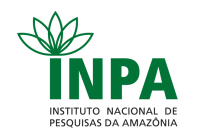Corpo Discente - Egressos
Danielle Rachel dos Santos Carvalho
| Título | TRIAGEM, ANÁLISE GENÉTICA, SISTEMATIZAÇÃO, NOTIFICAÇÃO E MAPEAMENTO DE RISCO PARA PACIENTES DIABÉTICOS COM SUSPEITA DE MODY EM MANAUS. | ||||||||||||||||||||||||
| Data da Defesa | 29/06/2018 | ||||||||||||||||||||||||
| Download | Em sigilo | ||||||||||||||||||||||||
Banca
| |||||||||||||||||||||||||
| Palavras-Chaves | Diabetes, Mutation, MODY, glucokinase and HNF1A | ||||||||||||||||||||||||
| Resumo | Atualmente o diabetes mellitus (DM) é classificado de acordo com sua etiologia e patogêneses em DM tipo 1, DM tipo 2, um 3o grupo, conhecido como outros tipos de diabetes, e um 4o grupo do diabetes gestacional. Neste trabalho será dado destaque para um tipo pertencente ao terceiro grupo de DM, conhecido como MODY (Maturity-Onset Diabetes of the Young), causada por mutações em diferentes genes. Os tipos mais frequentes, respondem por cerca de 80% dos pacientes, são os relacionados a mutações no HNF1A (MODY 3) e no GCK (MODY 2). O objetivo deste trabalho é identificar mutações nos genes MODY por meio de sequenciamento automático direto e a partir da determinação de tal(is) mutação(ões) desenvolver um método diagnóstico mais rápido e com menor custo, como Reação em Cadeia da Polimerase-Polimorfismo de Tamanho dos Fragmentos de Restrição (PCR/RFLP) ou PCR em tempo real com sonda específica para a mutação de base única ou ainda melt de alta resolução (HRM). A primeira etapa foi a busca de dados de 504 prontuários de pacientes diabéticos atendidos no Serviço de Endocrinologia de referência em Manaus/AM. D Dos 504 cadastrados, 378 prontuários foram acessados. Destes, apenas 2 pacientes foram selecionados com suspeita inicial de MODY 3 e 11 de MODY 2. Em seguida, realizada a extração do DNA, que se mostrou eficiente e de boa qualidade. Os iniciadores foram desenhados para cada exon e identificados pelo alinhamento com a sequência de referência do cromossomo 7 (MODY 2) e cromossomo 12 (MODY 3). Ao fim dos testes, 4 pacientes foram positivos para MODY 2 e 1 paciente para MODY 3. Além destas mutações, foi encontrado em 5 pacientes, no intron localizado entre os exons 9 e 10, variação alélica C/T (Y), correlacionadas com DM e hipertensão arterial sistêmica (HAS). Na última etapa, foi desenvolvido um protótipo de aplicativo para smartphone do tipo calculadora de probabilidade, que identifica o risco de um indivíduo ser portador de MODY 2 ou 3, facilitando e direcionando a solicitação do teste genético para confirmação diagnóstica. | ||||||||||||||||||||||||
| Abstract | Currently diabetes mellitus (DM) is classified according to its etiology and pathogenesis of type 1 diabetes, type 2 diabetes, a 3rd group, known as other types of diabetes, and the fourth group gestational diabetes. This work will be given prominence to a type belonging to the third group of DM the monogenic form, known as MODY (maturity-onset diabetes of the young), caused by mutations in different genes. The most common types of MODY, accounting for about 80% of patients are related to mutated HNF1A (MODY 3) and GCK mutation (MODY 2). Identifying these mutations is important for the correct and definitive diagnosis, and help doctors predict the clinical course of the disease and conduct counseling for proper therapy. For this reason, the aim of this work is to identify mutations in MODY genes through direct automatic sequencing and from the determination of such (s) mutation (s) to develop a diagnostic method faster and less expensive, such as PCR-RFLP and PCR Real Time with probe specific for the single base mutation or HRM. The first step was performed by analysis of medical records of patients at the University Hospital Getulio Vargas (HUGV) - UFAM. Of the 504 patients registered, 378 medical records were obtained. Of these, 2 with initial suspicion of MODY 3 and 11 with suspicion of MODY 2 were selected. DNA extraction was efficient and of good quality. The primers were designed for each exon and identified by alignment with the reference sequence of chromosome 7 (MODY 2) and chromosome 12 (MODY 3). At the end of the tests, 4 patients were positive for MODY 2 and 1 patient was positive for MODY 3. Besides these mutations, it was found in 5 patients, in the intron located between exons 9 and 10, allelic variation C / T (Y), correlated with DM and systemic arterial hypertension (SAH). In the last step, a prototype application was developed for the smartphone of the calculator type of probability, which identifies the risk of an individual being a carrier of MODY 2 or 3, facilitating and directing the request of the genetic test for diagnostic confirmation. | ||||||||||||||||||||||||
Parceiros

























